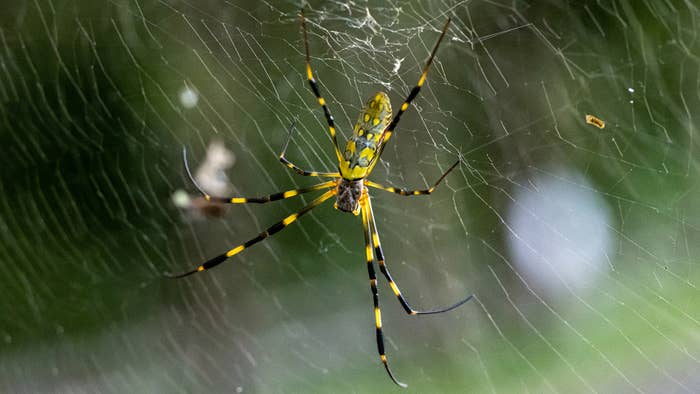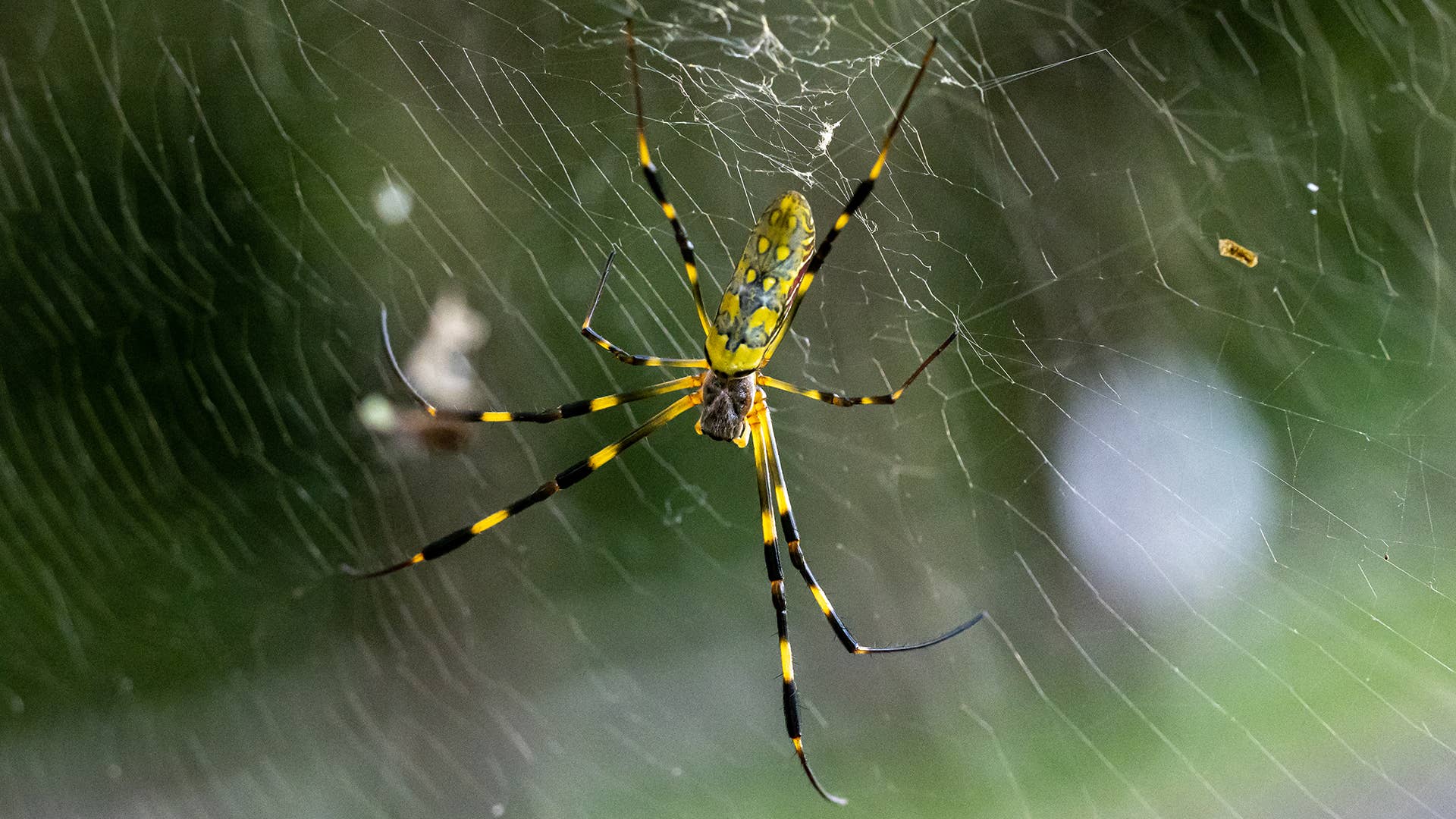
Huge and invasive Joro spiders are expected to proliferate on the east coast of the U.S., per a new study from scientists at the University of Georgia published in Physiological Entomology.
Scientifically known as trichonephila clavata, the species is most commonly found in Japan, Korea, Taiwan, and China. Identifiable by their colorful patterns and large size, Joros were first spotted in Georgia in 2013. Since then, they’ve been seen in other states across the southeast. Specimens can grow up to roughly three inches, with numerous outlets pointing out Joros can take up the width of a child’s palm. Live Science calls them “flying spiders” due to the fact their “hatchlings disperse by fashioning web parachutes to fly as far as 100 miles.”
It’s not exactly clear how Joros made their way to the United States, but some scientists have suggested they arrived via shipping containers. Although their size makes them intimidating, Joro spiders are not believed to be a threat to humans. They also won’t have much, if any, effect on local food ecosystems and could provide an additional source of sustenance for predators.
“People should try to learn to live with them,” said study co-author Andy Davis in a statement. “If they’re literally in your way, I can see taking a web down and moving them to the side, but they’re just going to be back next year.” Co-author Benjamin Frick added, “The way I see it, there’s no point in excess cruelty where it’s not needed.”
A closely-related species, the golden silk spider, established itself in the United States after making its way from the tropics over 160 years ago. Since scientists say the two share similar physiologies, they used the spread of the golden silk spider to hypothesize how far the the Joro could spread. The former species did not extend beyond the southeast, and it’s expected Joros will also stick to the region.

